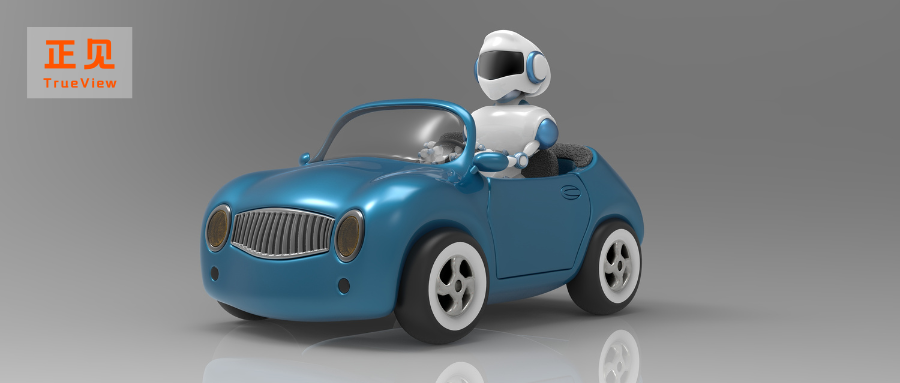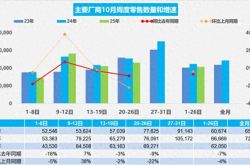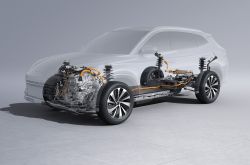Revolutionizing Auto Manufacturing: The Rise of AI
![]() 02/28 2025
02/28 2025
![]() 543
543

How can automotive newcomers differentiate themselves in the second half of the year?
Content/Awen
Editor/Yibai
Proofreader/Yong'e
Automakers are accelerating towards intelligence.
Recently, two major headlines captured the spotlight. One was Lei Jun personally recruiting Luo Fuli, a key developer of the open-source large model DeepSeek, with an annual salary in the tens of millions, to lead Xiaomi's AI large model team. The other was Li Auto hosting an AI Talk event, where CEO Li Xiang revealed his transition from being an automaker CEO to an AI enterprise CEO, allocating half of the company's 10 billion R&D budget to AI.
A closer look at automakers' product introductions over the past two years reveals a shift in focus. They are no longer emphasizing driving range but rather smart cockpits and intelligent driving. For instance, within the vehicle cabin, users can interact via voice and gestures, enjoy movies on large screens using AR technology, and benefit from advanced intelligent driving functions and integrated driving and parking capabilities.
Take Lei Jun, who briefly became China's richest man yesterday, and his unveiling of the Xiaomi SU7 Ultra as an example. The car is equipped with Xiaomi HAD end-to-end full-scenario intelligent driving. Meanwhile, Xiaomi's Pengpai Smart Cockpit, integrating human-vehicle-home ecosystem technology, offers an integrated experience encompassing smart navigation, entertainment, and vehicle control. It also introduces functions such as "Roaming and Positioning Parking" and "Parking Out of Extremely Narrow Spaces".
For automakers, establishing a stronghold in the field of intelligence is no easy feat. To truly achieve this goal, substantial computing power and continuously refined algorithms are essential.
Currently, automakers fall into two camps when it comes to large models. One camp chooses to collaborate with existing large model providers, such as Baidu, iFLYTEK, and SenseTime. The other camp opts for in-house development, with Li Auto releasing its self-developed large model, MindGPT.
2024 is hailed as the "first year of intelligent driving." This year also marks the tenth anniversary of the electric vehicle revolution. Smart cars are accelerating into the era of AGI. Whether through in-house development of large models or collaboration with these tech giants, "end-to-end" has become the current benchmark for competition in intelligent driving.
How can automotive newcomers differentiate themselves in the second half of the year? The outcome remains uncertain. Will these up-and-coming players meet again at the next decade's juncture?
Part 1
New Forces Begin to "Compete" in Large Models
As one of the few profitable enterprises in the new energy vehicle sector, Li Xiang believes that "the future development direction of Li Auto is not to make cars smarter but to make AI automotive." Li Auto's goal is to become a leading AI enterprise.
In this context, the car serves merely as a means, while intelligence is the ultimate goal. Li Xiang explains, "Large models are the operating system and programming language of AI, and Li Auto must master this core technology."
According to Li Xiang, Li Auto's growth path is divided into two major stages. Firstly, the short-term goal is to become the number one in China's spatial intelligence field and enter the top three in large language models. The medium- to long-term goal is to achieve deep integration of linguistic intelligence and spatial intelligence, constructing a unified VLA model (Visual-Linguistic-Action model).
Almost in tandem with Li Auto is Lei Jun and Xiaomi.
Thanks to the halo effect of Lei Jun and Xiaomi, Xiaomi SU7 has undoubtedly been the king among the "new forces" in terms of marketing and traffic over the past year. Last December, Xiaomi Group announced that it was actively recruiting top talent in the AI field, including Luo Fuli, a core developer of the DeepSeek open-source large model DeepSeek-V2.
Xiaomi's investment in AI large model research and development is also continuously increasing. On December 26 last year, news emerged that Xiaomi was building a GPU cluster with ten thousand cards to further enhance its training and optimization capabilities for AI large models.
It is reported that Xiaomi's large model team already had 6,500 GPU resources at its inception, and the newly built GPU cluster with ten thousand cards will significantly bolster its competitiveness in the AI field.
In fact, Xiaomi has already made attempts in the AI large model arena. As early as July 2016, Xiaomi began laying out its AI strategy. In April 2023, Xiaomi established a large model team within its AI laboratory. Last November, Xiaomi further set up a dedicated AI platform department, led by Zhang Duo, who was personally dubbed the "Xiaomi God" by Lei Jun.
Turning to XPeng Motors, its AI Xiaopeng, integrated with large model capabilities, can respond to encyclopedic knowledge questions and obtain the latest information on the internet through online searches. AI Xiaopeng can also create fairy tales, generate images, make appointments based on the themes in users' speech, and even help users identify vehicle information, road sign information, etc., through camera input.
XPeng's AI Tianji system's AI chauffeur and AI parking functions can mimic the driving style of the owner to handle practical problems, enabling "one-click commute to work" and "one-click return home." Its AI bodyguard can recognize over 50 targets, including manhole covers and suspended road signs, to provide early warnings of potential risks.
The level of automotive intelligence is becoming increasingly attractive to consumers. Looking around, there are hundreds of electric vehicle enterprises in China, but very few are developing base models. This presents opportunities and markets for AI companies providing base large model solutions for the automotive industry, such as SenseTime, Megvii, and iFLYTEK.
For instance, SenseTime currently possesses a trinity of general artificial intelligence (AGI) technology architectures and product systems encompassing "driving-cockpit-cloud." On November 27 last year, SenseTime unveiled multiple new AI automotive products, including the Jueying mass-produced intelligent driving product system for high-level intelligent driving and end-to-end intelligent driving covering highways, urban areas, and parking scenarios, along with an upgraded industry benchmark-level "Kaiwu" world model. For smart cockpits, the industry's first large model innovation product, "A New Member For U" (Your New Family Member), was launched, giving cars an "interesting soul."
Notably, SenseTime is also the company that proposed the industry's first end-to-end intelligent driving solution integrating perception and decision-making.
Public data shows that the cockpit large model product matrix of the smart car platform "SenseTime Jueying" has been integrated into models such as Xiaomi SU7, IM Motors, and LEVC L380. Among them, the Jueying large model comprehensively assists the Xiaomi SU7's Xiaoai voice assistant in in-vehicle voice scenarios, while the "Miaohua" product is integrated into the entire IM Motors lineup.
Looking at Megvii, after years of waiting for an IPO that never materialized, Megvii Technology ultimately chose to withdraw its IPO application, and founder Yin Qi embarked on a new role – devoting himself to smart cars as chairman of Lifan Technology.
Tracing the origins of Megvii Technology's involvement in the smart car business can be traced back to early 2021, when it established the Maxchi Smart Drive brand, quickly diving into a vision-based technical route and becoming one of the earliest domestic manufacturers to develop along the BEV vision-based technical direction.
In 2023, three differently configured mass-produced intelligent driving solutions were officially released, all targeting L2+ autonomous driving, and mass-produced on multiple Geely models.
Previously, Chongqing Liangjiang New Area, Geely, and Megvii Technology announced a strategic cooperation plan, where the three parties will jointly create an open AI smart driving platform, constructing an "AI + car + robot" industrial innovation and development model.
In the automotive field, iFLYTEK released the Spark large model in 2023, actively promoting the application and implementation of large model technology in the automotive field. In December of that year, the first Chery Star Era ES equipped with the iFLYTEK Spark large model was officially launched and won the "Best Sedan" award in January last year.
During the process of deploying large models in automobiles, iFLYTEK also launched the automotive end-side large model for the first time.
Compared to cloud-side large models, the end-side 1.3B large model has a performance loss of ≤1%, with a first response time of 40ms and end-cloud fusion interaction as low as 1.3s, enhancing the human-computer interaction experience. In the first half of 2024, iFLYTEK successively reached cooperation with companies such as FAW Group, RDI Automobile, Alipay, and China Automotive Data.
Today, the new forces are standing on a broader "battlefield," facing new competitors, strategies, and market competitions. They all strive to find differentiated competitive advantages over their peers to "survive" and "thrive" in the fierce market elimination race. Hence, we witness such a scene – automakers are eager to integrate large models into their cars, and large model companies are also anxious to recommend their large models to automakers.
Part 2
AI Large Models: The Next "Battlefield" for New Forces
Today, intelligent driving and smart cockpits have become the main battlegrounds of AI competition.
Firstly, intelligent driving, as the focal point of AI technology application in the automotive field, is the sector with the most rapid technological change in recent years. In the realm of intelligent driving, the application of AI large models can significantly enhance vehicles' perception accuracy, gradually reduce dependence on high-precision maps, and thereby improve driving safety and convenience, which are exactly what consumers care about and expect.
Looking back over the past few years, intelligent driving technology has undergone several important technological route adjustments.
From relying on high-precision map solutions to shifting to mapless modes, to companies represented by Tesla attempting a pure vision-based (Abandoning LiDAR) route. However, this has not truly achieved intelligence. These so-called intelligent driving systems still require a large number of programmers to invest substantial effort in writing code and fixing bugs.
However, the advent of end-to-end technology has completely overturned this traditional model.
Specifically, it promotes the transformation of the intelligent driving experience from "usable" to "user-friendly," enhancing users' willingness to pay. Taking Tesla as an example, the company released the FSD V12.3 version in March 2024, adopting an end-to-end neural network algorithm that reduces information transmission loss between modules in traditional modular systems. Through training with over 10 million clips, FSD has achieved better simulation of human driving behavior and reduced the willingness to take over control.
Another in-depth application scenario of AI in automobiles is the smart cockpit. Currently, automakers represented by Li Auto, Geely Yue, NIO, and XPeng have embedded large models into smart cockpits, realizing various functions such as speech recognition, sentiment analysis, and personalized recommendations. Smart cockpits not only assist users with the convenience of intelligent driving, vehicle management, and leisure and entertainment but also aid users in their work.
According to data from Gaoshi Automotive Research Institute, the current overall penetration rate of smart cockpits in China is close to 60%. With the further maturation of the entire industrial chain and the continuous reduction of driving costs, it is expected that the penetration rate of smart cockpits will continue to increase, with the overall penetration rate expected to exceed 70% in 2024.
Although the introduction of large model technology brings powerful processing capabilities to intelligent driving, there is still a significant gap between technology integration and actual user scenario applications, with challenges remaining in stability and accuracy. For instance, the in-vehicle system sometimes fails to execute voice commands accurately or responds slowly, which may affect the user experience.
In future smart cockpits, "doing subtraction" may become the main optimization path for automakers.
AI will not only be a technical tool but will become the owner's "intelligent assistant," enhancing driving safety, convenience, and entertainment while providing more personalized services through precise understanding of the owner's needs. For example, the voice output of the smart cockpit should be more concise and accurate, ensuring that the driver can quickly complete tasks and focus their attention on the road.
From automakers to smart system suppliers and tech companies, they are all competing in AI, which in turn forces automakers to continuously expand application boundaries, making smart cars "smarter."
Part 3
Automakers vs. Large Model Suppliers: Allies or Competitors?
Voice assistants initially primarily played the role of "conversational tools" but later evolved to possess logical thinking and general task processing capabilities, becoming "little assistants." However, this still fails to truly satisfy the diverse and personalized needs of humans.
Large models can achieve better generalization performance at a lower cost, adapting to different customers and environments. They can also help automakers achieve efficiency in data collection, processing, model training, etc., quickly responding to market demands and shortening product development cycles.
After utilizing large models, automakers will possess differentiated competitiveness, which is one of the reasons why new forces are eager to enter the AI large model field.
In comparison to advanced foreign large models, despite rapid strides in data annotation, computing power development, and model architecture, domestic large models still trail behind. Li Yanhong has previously emphasized, "Creating such a colossal language model isn't achievable within a few months of intense effort; it's the culmination of Baidu's over a decade of substantial R&D investments and gradual buildup."
The potential applications of AI large models in the automotive industry are vast, yet constructing the necessary computing power demands significant capital investment. Automakers must weigh various factors when deciding between in-house development and collaboration, including technical prowess, resource allocation, capital commitment, market demand, and competitive pressures.
For emerging players, the large language models from Baidu, Huawei, and iFLYTEK, leveraging technologies such as natural language processing, speech recognition, visual recognition, and multimodal fusion, have significantly enhanced the personalized services and user interaction experience within smart cockpits, fostering more intuitive and efficient intelligent interactions.
However, from a market ecology standpoint, the exploration of AI large model deployment and commercialization is ongoing. In the future, automakers and large model providers will not remain purely competitive entities; their collaboration will deepen, perhaps jointly exploring and innovating application scenarios.
Yu Chengdong previously tweeted, "The era of universal intelligent driving has arrived!" For automotive newcomers midway through the race, intelligent driving is a domain where they must invest heavily in technology R&D and marketing strategies. They are acutely aware that to seize market share from traditional automakers, they must differentiate themselves, and AI large models represent one such avenue.








